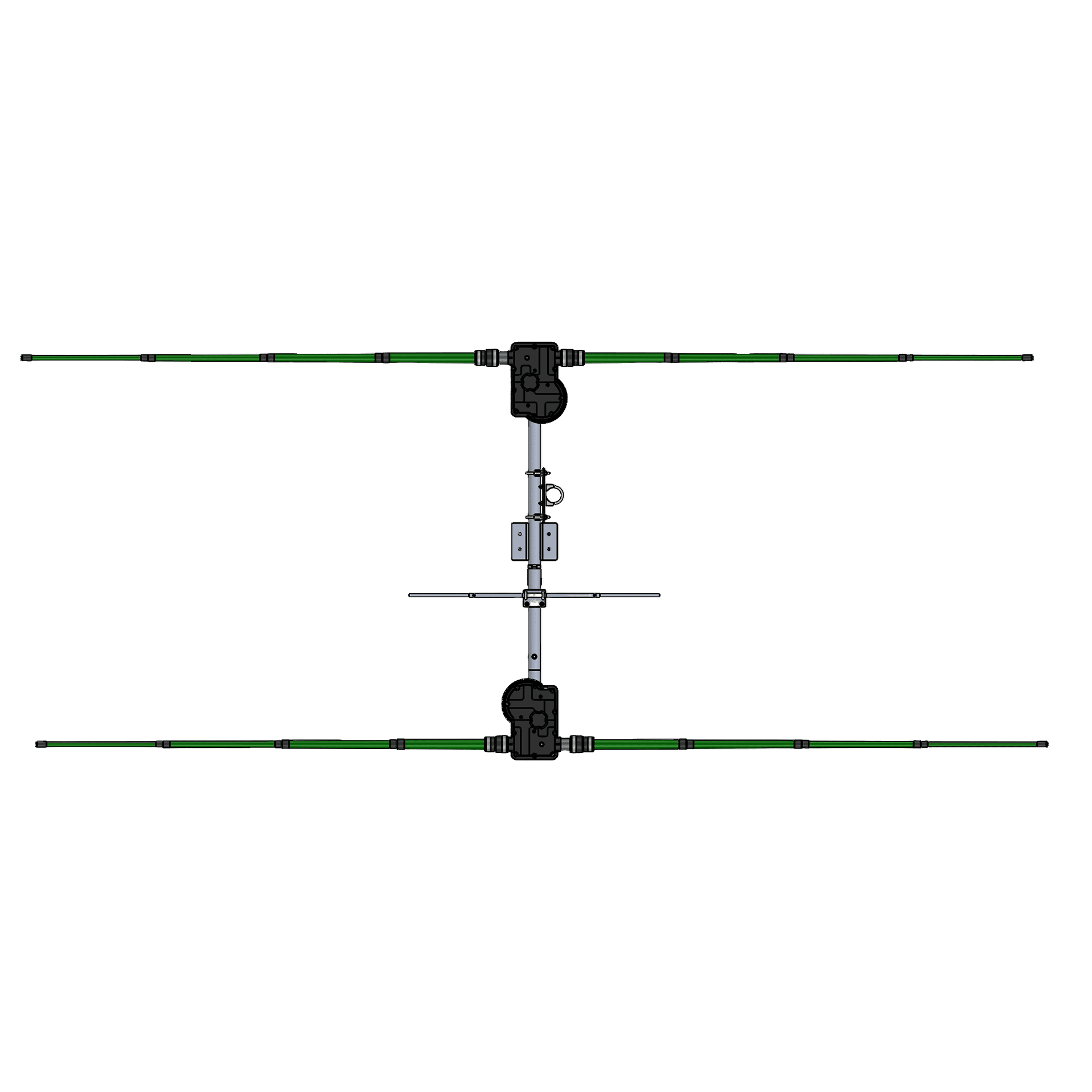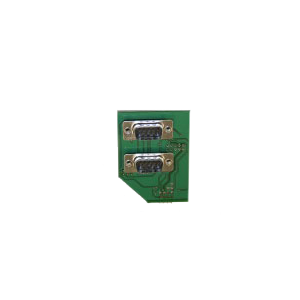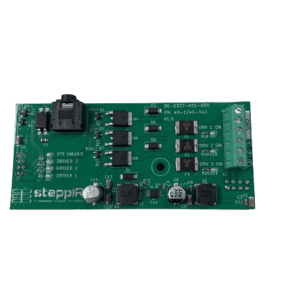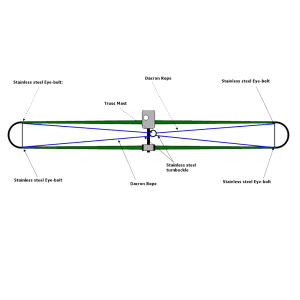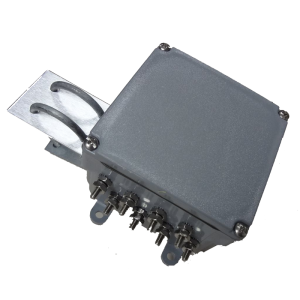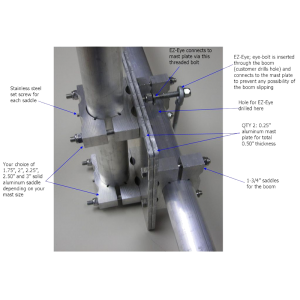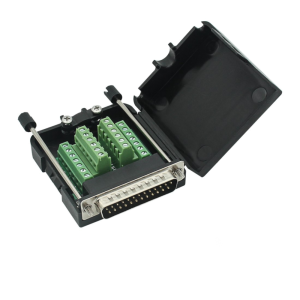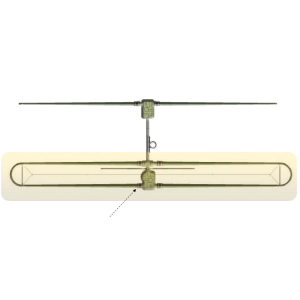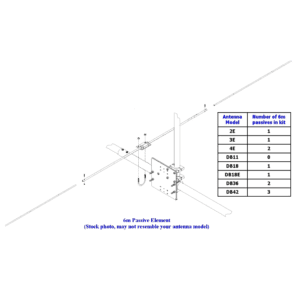Description
The 2 Element Yagi has the highest value-to-performance of any of our antennas and is the antenna of choice for DX-peditions.
The SteppIR two element 20m-6m Yagi has a small profile, but it offers big performance. This antenna functions in a manner that would normally be consistent with a three element Yagi, due to its unique 61.5” (1.56m) boom length. When placing a parasitic element very close to a driven element, approximately .1 wavelength or less, the antenna will achieve gain performance that is quite high for a 2 element Yagi, more like the performance expected from a 3 element Yagi. There would normally be a caveat to this, at least with a fixed length aluminum Yagi – the antenna would have greatly limited bandwidth – roughly 120 Khz! This would be a highly impractical design since traditional fixed length Yagis are single-frequency devices – the bandwidth is very narrow unless you use traps, interlacing or simply add more elements in order to “trick” the radio into thinking it is resonant. Of course, all of those methods lead to significantly reduced performance when compared to a single frequency Yagi.
- 2 element Yagi
- 20m-6m continuous coverage
- 61.5” boom
- 36 ft longest element
- 18.94 ft turning radius
- 7.27 sq ft projected area
- Weight: 30 lbs
- Controller options:
-
Weight 37lb/16.8kg *Projected Area 10.9 sq ft / 1.01 sq m Longest Element 39ft/11.9 m Turning Radius 18.94ft/5.77 m Boom Length 61.5in/1.56 m Mast Hardware 2.0in/5.08 cm Power Rating 3 kW Wind Rating 100 mph / 160 km/h Frequency Coverage 13.85 MHz – 54MHz Cable Requirements 12 conductor 22 ga shielded Tuning Rate 1.33 ft/sec - 0.4 m/sec -
Band dBi Gain (Freespace) dB F/R (Freespace) 40 m 1.8* N/A 30 m 2.1* N/A 20 m 6.6 21 17 m 6.6 16 15 m 6.5 13 12 m 6.4 11 10 m 6.2 9 6 m 5.0 (8.3)** 2 (20)** * with 40/30 dipole ** with 6m passive element kit
*Projected area is the total perpendicular surface area measured in square feet/square meters, that is exposed to wind. To calculate wind load you always take the largest projected area whether that is from the perspective perpendicular to the boom or perpendicular to the elements. In the case of SteppIR Yagi’s, the maximum projected area will always be the sum of the surface area’s perpendicular to the Yagi elements. This calculation is a constant number and will not change regardless of EIA specification changes. Do not mistake this projected area calculation as anything more than a data point to present to your structural engineer, tower manufacturer or rotator manufacturer so that they can determine what is necessary for your application.
When sizing an antenna to a tower, many factors need to be taken into consideration including, but not limited to: projected area of antenna in square feet or square meters, weight of the antenna and other items on tower, turning radius, element lengths, antenna height, location exposure category, locations three-second gust wind-speed, locations maximum radial ice loading.
Improper specification of an antenna or rotator to a tower can result in product failure, injury or death. SteppIR is not an expert on tower or rotator sizing and for this reason will never make any kind of a recommendation – this specification process is meant for industry professionals such as a structural engineer, tower manufacturer or rotator manufacturer. Please do not attempt to self-specify our products – the information provided by SteppIR is to be utilized by industry professionals only.
